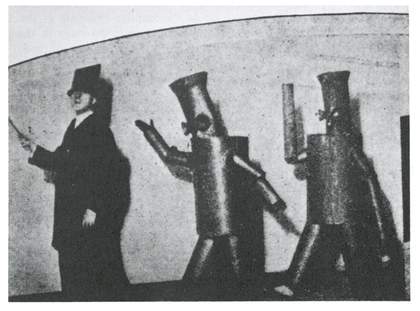Editors’ note
In 1913 the futurist F.T. Marinetti printed the Variety Theatre Manifesto, which was designed to provoke and scandalise its audience. Suggestions included ‘spreading powerful glue on some of the seats’ and offering free tickets to people who were ‘notoriously unbalanced, irritable or eccentric’. Of course, Marinetti and company thought they were being hilarious, but they also had serious intentions. As Boris Groys points out in his conversation with Claire Bishop, they wished to ‘destroy the long-held benign contemplative attitude of the spectator, which had been the standard position of art audiences in the nineteenth century’. To this they added their unsavoury alliance with fascist ideology to create what was arguably the most vibrant and disruptive art movement of the twentieth century. It was destined to fail. However, their attitude would shape generations of future artists, activists and thinkers – from Tristan Tzara to Guy Debord, Allan Kaprow to Maurizio Cattelan. Now, it is fair to say that participation and collaboration have become the mainstays of contemporary art methodology, perhaps nowhere better exemplified than in Polish artist Artur Zmijewski’s film Them 2007. This engrossing piece focuses on a series of painting workshops between four different ideological groups: Jews, the socialists, Polish nationalists and the Catholic church. Each is asked to make an image that represents their identity, and the results are discussed collectively. Inevitably, polite comment descends into chaos and bitter exchanges. Despite Zmijewski’s cool, subjective editing, the complexity of a nation’s image of itself is brought alive in fifteen minutes. No doubt Marinetti would have approved.
Bice Curiger and Simon Grant


